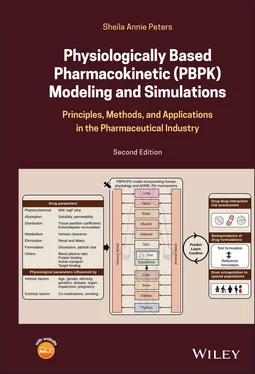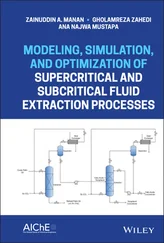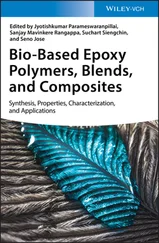Protein binding of highly plasma‐bound drugs
Final dose
2.6 THERAPEUTIC PROTEIN–DRUG INTERACTION
Under inflammatory conditions, proinflammatory cytokinesare produced locally around the pathological areas and are circulated to activate inflammatory responses in distal tissues (Wu and Lin, 2019). Cytokines like tumor necrosis factor‐α (TNF‐α), interleukin‐1β (IL‐1β), interleukin‐6 (IL‐6), interferon‐γ (IFN‐γ), and transforming growth factor‐β (TGF‐β) have been shown to reduce the expression of CYP1A2, CYP2C8, and CYP3A4 in cultured human hepatocytes. Given that CYP enzymes and drug transporters share certain common regulatory pathways, the effects of cytokines on the regulation of CYP enzymes may also be applicable to transporters (P‐gp). Aberrant expression of these drug‐processing proteins is observed in several animal models of human inflammatory diseases like type 1 diabetes, rheumatoid arthritis, inflammatory bowel disease, metabolic disorders, and several neurodegenerative diseases. Cytokine‐induced gene regulation is probably driven by altered activities of various transcription factors, including nuclear factor‐κB (NF‐κB) and nuclear receptors. Thus, a therapeutic protein acting as a pro‐inflammatory cytokine or a cytokine modulator could potentially impact CYP enzyme and transporter function. There are still knowledge gaps in this area (13). TP–drug interactions have been evaluated from in vitro studies, animal studies, and/or clinical settings. An in vitro assessment of drug interaction between a small molecule and a cytokine could be initiated, if justified based on biology. Measuring cytokine levels in clinical study can provide supportive evidence for the DDI potential. FDA scientists (Jing et al., 2020) reported that about a third of the FDA‐approved drugs have TP labels that contain PK‐related DDI information derived from at least one study method. More than half of these evaluations showed no interaction, and for the remaining, no dose adjustment was recommended (Jing et al., 2020). For an antibody–drug conjugate (ADC), the interaction with small molecule drugs potentially involves not only the antibody component but also the small molecule drug component. However, since the free small molecule component may not be at high enough concentrations to act as a perpetrator; only the victim interaction must be evaluated. FDA has recently released a draft guidance to determine the need for DDI studies for a therapeutic protein (USFDA 2020c).
Cytokines:Cytokines are a large group of proteins, peptides, or glycoproteins secreted by specific cells of immune system. They act as signaling molecules and mediate and regulate immunity, inflammation, and hematopoiesis. Mechanism‐based inhibition:MBI is a potential mechanism for TDI, where a more inhibitory metabolite relative to parent, causes the inactivation of a CYP by a protein or heme adduct formation. Reaction phenotyping:is the estimation of the relative contributions of specific enzymes to the metabolism of a test compound Time‐dependent inhibition(TDI):TDI is a collective term that refers to the increase in the extent of inhibition of the substrate, when the inhibitor is incubated with the enzyme prior to the addition of the substrate in vitro or during the dosing period in vivo.
1 Aninat, C. et al. (2006). Expression of cytochromes P450, conjugating enzymes and nuclear receptors in human hepatoma HepaRG cells. Drug Metabolism and Disposition 34 (1): 75–83. https://doi.org/10.1124/dmd.105.006759.
2 Atkinson, A., Kenny, J.R., and Grime, K. (2005). Automated assessment of time‐dependent inhibition of human cytochrome P450 enzymes using liquid chromatography‐tandem mass spectrometry analysis. Drug Metabolism and Disposition 33 (11): 1637–1647. https://doi.org/10.1124/dmd.105.005579.
3 Ayrton, A. and Morgan, P. (2001). Role of transport proteins in drug absorption, distribution and excretion. Xenobiotica 31 (8–9): 469–497. https://doi.org/10.1080/00498250110060969.
4 Backman, J.T. et al. (2005). Rifampin markedly decreases and gemfibrozil increases the plasma concentrations of atorvastatin and its metabolites. Clinical Pharmacology and Therapeutics 78 (2): 154–167. https://doi.org/10.1016/j.clpt.2005.04.007.
5 Bendayan, R. et al. (1990). Effect of cimetidine and ranitidine on the hepatic and renal elimination of nicotine in humans. European Journal of Clinical Pharmacology 38 (2): 165–169. https://doi.org/10.1007/BF00265978.
6 Chu, V. et al. (2009). In vitro and in vivo induction of cytochrome P450: A survey of the current practices and recommendations: A Pharmaceutical Research and Manufacturers of America perspective. Drug Metabolism and Disposition 37 (7): 1339–1354. https://doi.org/10.1124/dmd.109.027029.
7 Dunne, J. et al. (2011) ‘Extrapolation of adult data and other data in pediatric drug‐development programs’, Pediatrics, 128(5), p. e1242. doi: 10.1542/peds.2010‐3487.
8 El‐Sankary, W. et al. (2001). Use of a reporter gene assay to predict and rank the potency and efficacy of CYP3A4 inducers. Drug Metabolism and Disposition 29 (11): 1499–1504.
9 EMA (2013). Guideline on the investigation of drug interactions. In: London. https://www.ema.europa.eu/en/documents/scientific‐guideline/guideline‐investigation‐drug‐interactions‐revision‐1_en.pdf.
10 Fahmi, O.A. and Ripp, S.L. (2010). Evaluation of models for predicting drugdrug interactions due to induction. Expert Opinion on Drug Metabolism and Toxicology 6 (11): 1399–1416. https://doi.org/10.1517/17425255.2010.516251.
11 Franklin, M.R. (1991). Cytochrome P450 metabolic intermediate complexes from macrolide antibiotics and related compounds. Methods in Enzymology 206 (C): 559–573. https://doi.org/10.1016/0076‐6879(91)06126‐N.
12 Galetin, A. et al. (2006). Prediction of time‐dependent CYP3A4 drug‐drug interactions: Impact of enzyme degradation, parallel elimination pathways, and intestinal inhibition. Drug Metabolism and Disposition 34 (1): 166–175. https://doi.org/10.1124/dmd.105.006874.
13 Grime, K.H. et al. (2009). Mechanism‐based inhibition of cytochrome P450 enzymes: An evaluation of early decision making in vitro approaches and drug‐drug interaction prediction methods. European Journal of Pharmaceutical Sciences 36 (2–3): 175–191. https://doi.org/10.1016/j.ejps.2008.10.002.
14 Grimm, S.W. et al. (2009). The conduct of in vitro studies to address time‐dependent inhibition of drug‐metabolizing enzymes: A perspective of the Pharmaceutical Research and Manufacturers of America. Drug Metabolism and Disposition 37 (7): 1355–1370. https://doi.org/10.1124/dmd.109.026716.
15 Harper, T.W. and Brassil, P.J. (2008). Reaction phenotyping: Current industry efforts to identify enzymes responsible for metabolizing drug candidates. AAPS Journal 10 (1): 200–207. https://doi.org/10.1208/s12248‐008‐9019‐6.
16 Ho, R.H. and Kim, R.B. (2005). Transporters and drug therapy: Implications for drug disposition and disease. Clinical Pharmacology and Therapeutics 78 (3): 260–277. https://doi.org/10.1016/j.clpt.2005.05.011.
17 Hollenberg, P.F., Kent, U.M., and Bumpus, N.N. (2008). Mechanism‐based inactivation of human cytochromes P450s: Experimental characterization, reactive intermediates, and clinical implications. Chemical Research in Toxicology: 189–205. https://doi.org/10.1021/tx7002504.
18 Inotsume, N. et al. (1990). The inhibitory effect of probenecid on renal excretion of famotidine in young, healthy volunteers. Journal of Clinical Pharmacology 30 (1): 50–56. https://doi.org/10.1002/j.1552‐4604.1990.tb03438.x.
Читать дальше












